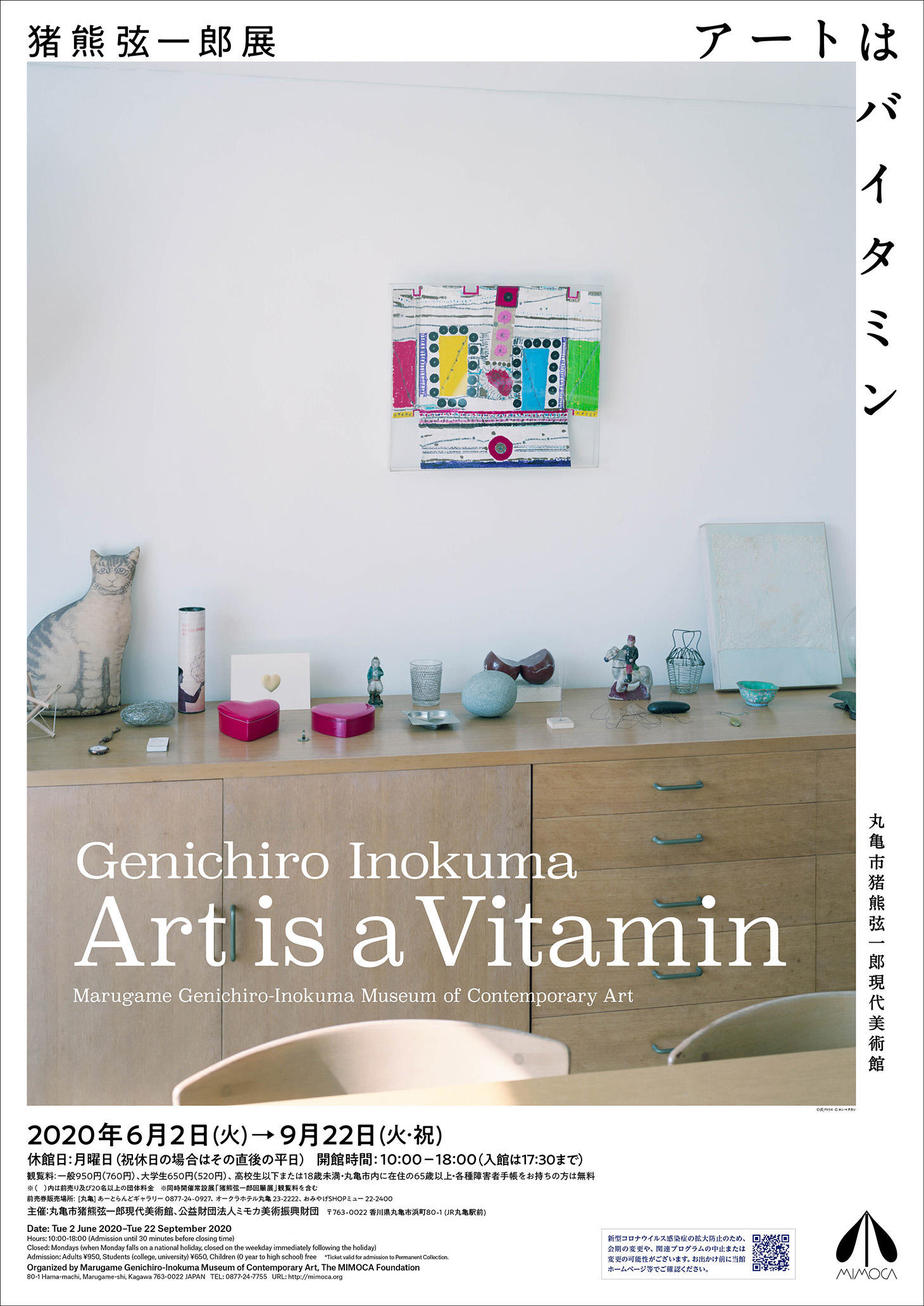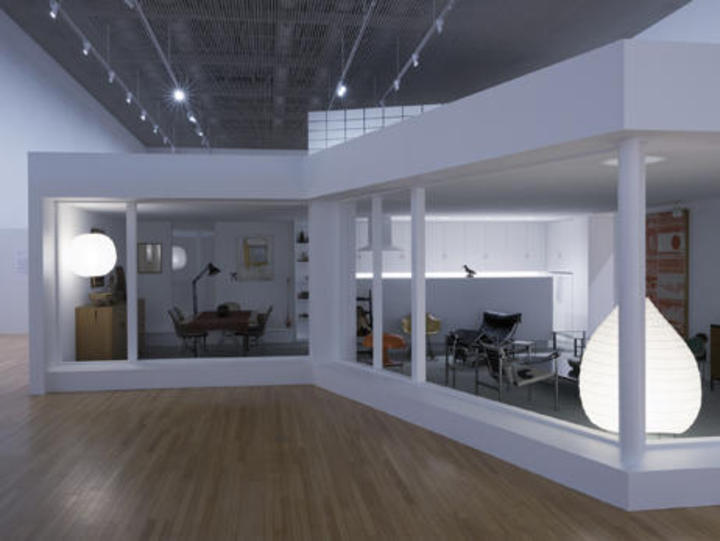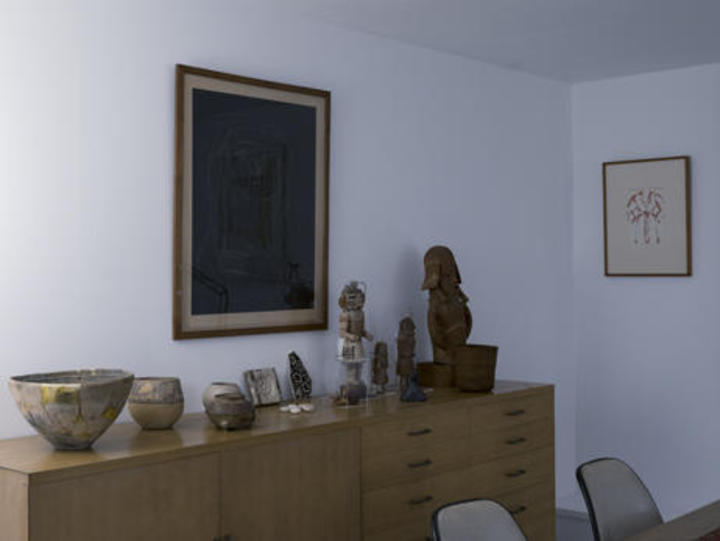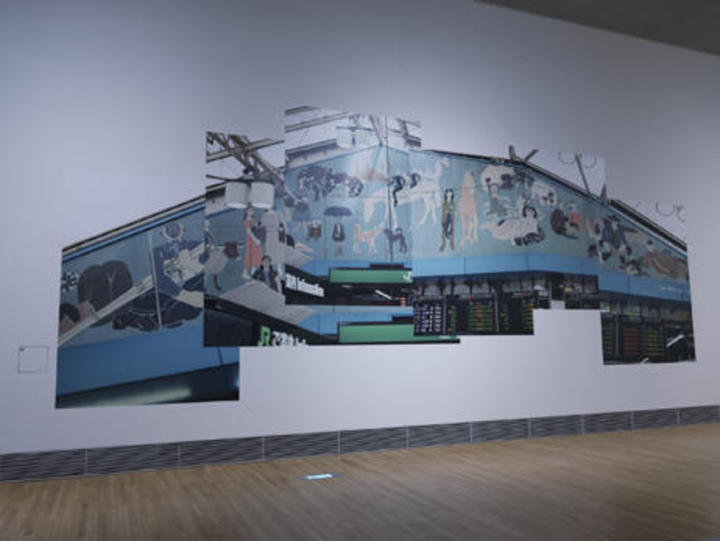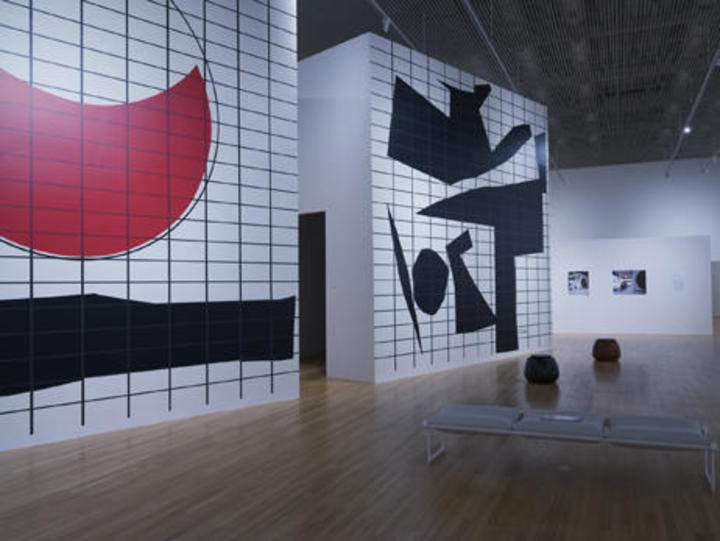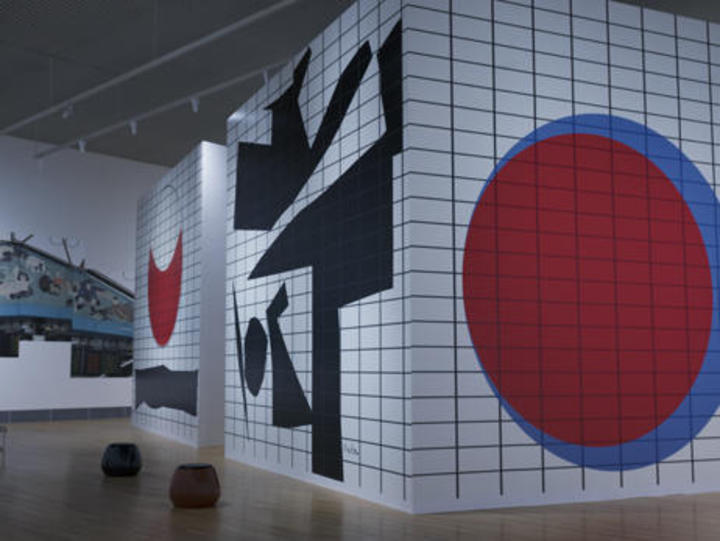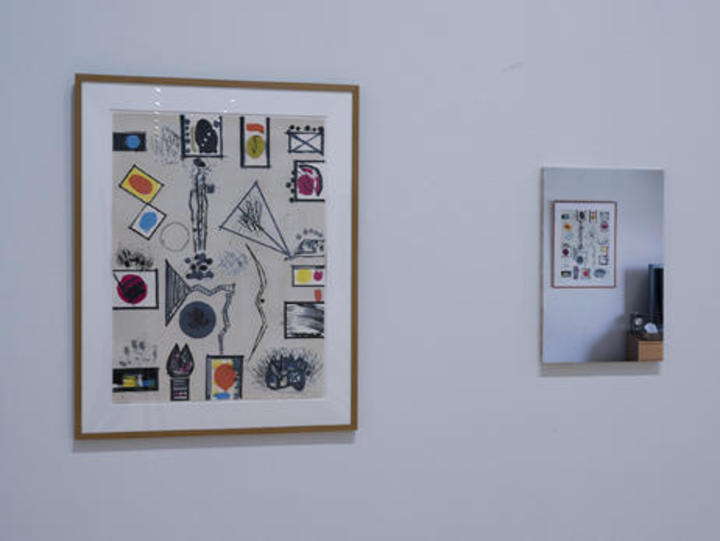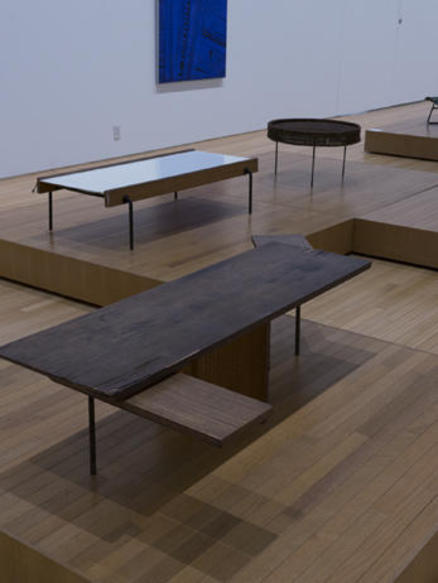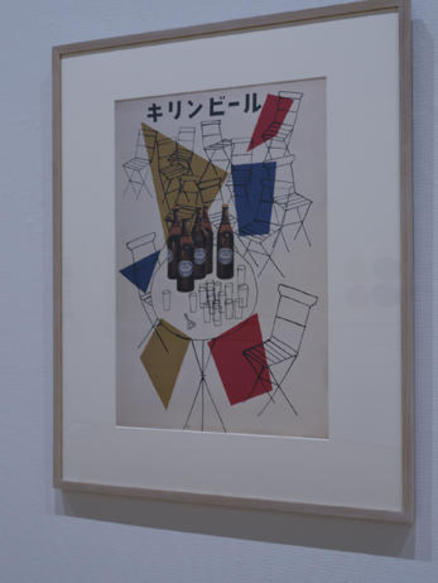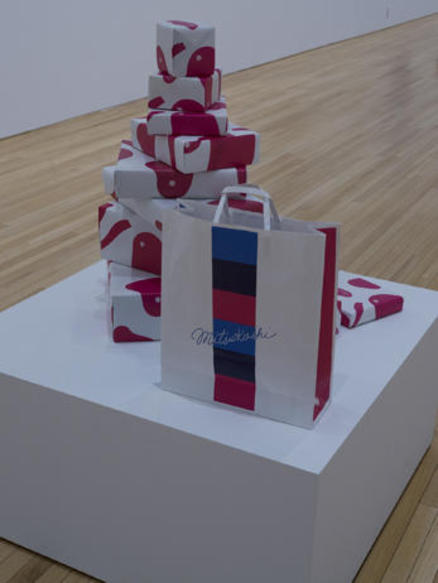"Genichiro Inokuma—Art is a Vitamin" Installation shot
1. Junzo Yoshimura, Denenchofu House, 1971, (1:1 scale model)
2. Junzo Yoshimura, Denenchofu House, 1971, (the interior of 1:1 scale model)
3. Genichiro Inokuma, Freedom, 1951, photo collage by Takashi Homma
4. Genichiro Inokuma, Wakei Seijaku, 1958, (1:1 scale model)
5. Genichiro Inokuma, Wakei Seijaku, 1958, (1:1 scale model)
6. Genichiro Inokuma, Communication Base, 1988, Private collection / Y's Studio, photo by Takashi Homma
7. Genichiro Inokuma, Side Table, Table, Akebia Side Table, all 1953
8. Genichiro Inokuma, Poster of Kirin Brewery Company, Limited, 1955
9. Genichiro Inokuma, Hana-hiraku wrapping paper of Mitsukoshi department store, 1950 / Shopping bag of Mitsukoshi department store, 1957
All images ©Takashi Homma
Genichiro Inokuma−Art is a Vitamin Genichiro Inokuma−Art is a Vitamin
We are pleased to welcome you, but we would like all visitors to understand hygiene and distancing rules to keep safety and comfortable viewing. Thank you for your understanding and cooperation.
Date: Sat. 18 April 2020 - Sun. 28 June 2020
Tue. 2 June 2020 - Tue. 22 September 2020
Closed: Mondays (when Monday falls on a national holiday, closed on the weekday immediately following the holiday)
Hours: 10:00 - 18:00 (Admission until 30 minutes before closing time)
Organized by Marugame Genichiro-Inokuma Museum of Contemporary Art, The MIMOCA Foundation
Admission: Adults ¥950, Students (college, university) ¥650, Children (0 year to high school) free *Ticket valid for admission to Permanent Collection.
“Art is like a medicine that gives vitality to the heart. Take this on a larger scale, and you have a museum. If a hospital is an institution that fights illness and restores people’s lives, then a museum is a hospital for the heart. Put even one painting inside a house, and the effect is like taking a good vitamin every day.”*
Loving beauty, painter Genichiro Inokuma (1902-93) studied beauty and sought to express it, all his life. Believing in beauty’s power to heal and enliven the human heart, he displayed the beauty he himself created in places open to many people, from a sincere desire to help the world’s people in their daily lives. Then, if even one good painting hung in a house, Inokuma believed, residents would benefit enormously simply from seeing it every day. If a museum was like a “hospital,” he reasoned, then a painting in a house was like a “vitamin pill.” He furthermore gave constant attention to his way of living and valued his own lifestyle, immensely.
Marugame Genichiro-Inokuma Museum of Contemporary art has newly reopened after renovation work to ensure the museum a long building life. On this occasion, we are returning to our beginnings to reaffirm Genichiro Inokuma’s views on the role of art and his methods of giving beauty to daily life with his artworks. Establishing three sections—"Inokuma’s Way of Living,” “Introducing Beauty in a Private Space,” and “Public Art”—we reproduce the kitchen/living room of Inokuma’s late-period Denenchofu house and demonstrate the use of his artworks in orchestrating a lifestyle. We also feature examples of Inokuma-design furniture and wrapping paper, and take a present-day look at his foremost works of public art.
*Interview: Genichiro Inokuma with Yoshiko Morita, “Painters Need to Live a Long Time,” Aji no Techo, September 1982 issue
"Genichiro Inokuma—Art is a Vitamin" Installation shot
1. Junzo Yoshimura, Denenchofu House, 1971, (1:1 scale model)
2. Junzo Yoshimura, Denenchofu House, 1971, (the interior of 1:1 scale model)
3. Genichiro Inokuma, Freedom, 1951, photo collage by Takashi Homma
4. Genichiro Inokuma, Wakei Seijaku, 1958, (1:1 scale model)
5. Genichiro Inokuma, Wakei Seijaku, 1958, (1:1 scale model)
6. Genichiro Inokuma, Communication Base, 1988, Private collection / Y's Studio, photo by Takashi Homma
7. Genichiro Inokuma, Side Table, Table, Akebia Side Table, all 1953
8. Genichiro Inokuma, Poster of Kirin Brewery Company, Limited, 1955
9. Genichiro Inokuma, Hana-hiraku wrapping paper of Mitsukoshi department store, 1950 / Shopping bag of Mitsukoshi department store, 1957
All images ©Takashi Homma
